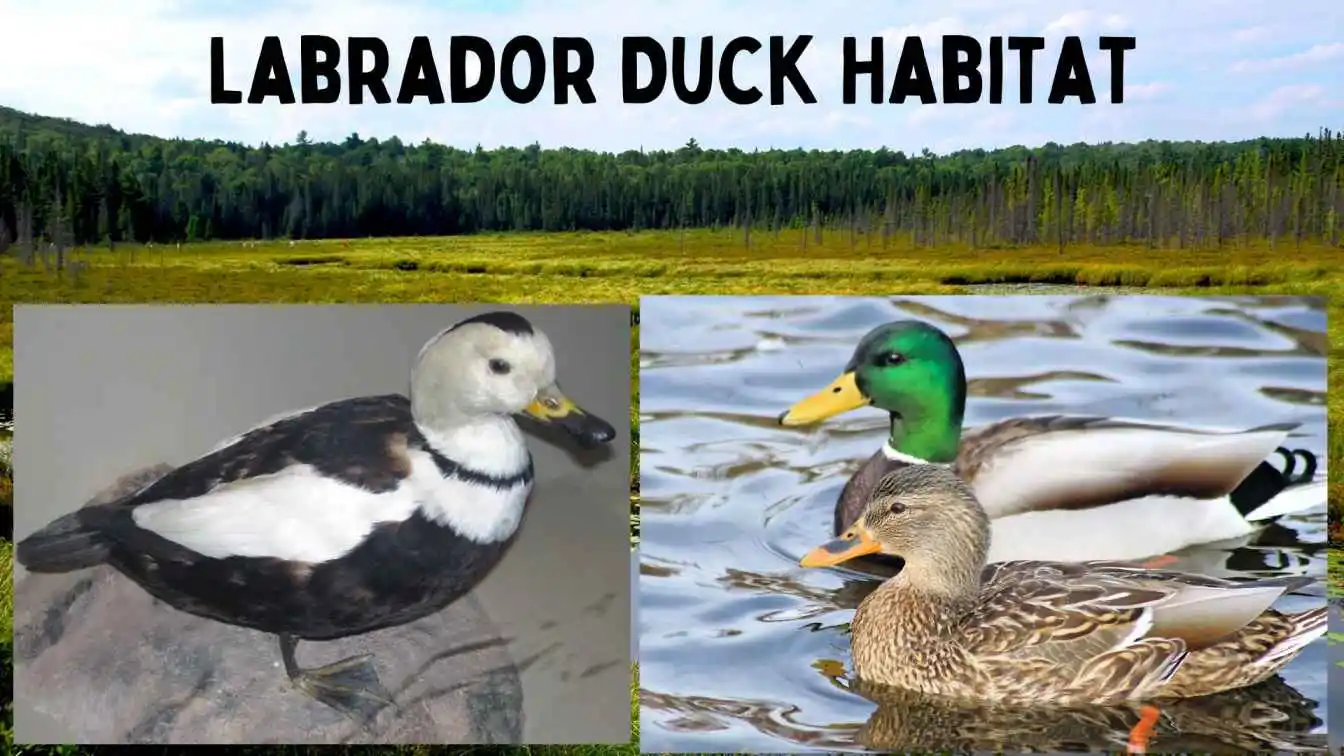The Labrador Duck Habitat, a baffling and presently wiped out bird, has long captivated ornithologists and nature lovers the same. However we can never again see this confounding species in the wild, understanding its environment offers a brief look into the world it once flourished in. This blog dives into the Labrador Duck’s normal natural surroundings, revealing insight into the ecological circumstances and topographical areas it once called home.

The Labrador Duck Habitat Basic Information
Prior to jumping into the particulars of its living space, it’s vital for realize a piece about the Labrador Duck itself. Referred to deductively as Camptorhynchus labradorius, this species was a medium-sized ocean duck. It had striking highly contrasting plumage, with guys being more clearly shaded than females. First depicted in the mid nineteenth 100 years, the Labrador Duck was one of the principal bird species in North America to be perceived as wiped out, with the last affirmed locating during the 1870s.
Waterfront Natural surroundings: Where the Labrador Duck Resided
Geographic Reach
The Labrador Duck essentially possessed the eastern shoreline of North America. Its reach stretched out from the shores of Newfoundland and Labrador in Canada, down through the northeastern US, including New York and New Jersey, and perhaps as far south as Chesapeake Cove. The bird was firmly connected with seaside conditions, particularly during the rearing and wintering seasons.
Favorable places
While little is had some significant awareness of the particular reproducing locales of the Labrador Duck, it is accepted that they reared in the northern pieces of their reach, perhaps in Labrador and Newfoundland. These districts gave the confined, rough shorelines and islands that would have been great for settling. The scanty human populace and relative confinement of these region offered a place of refuge for raising their young.
Wintering Grounds
Throughout the cold weather months, the Labrador Duck moved south to additional mild waterfront regions. Verifiable records recommend that enormous groups should have been visible off the shorelines of New York, New Jersey, and other mid-Atlantic states. The birds leaned toward shielded bayous, deltas, and estuaries where they could find more than adequate food and security from brutal winter storms.
Diet and Taking care of Propensities
The Labrador Duck’s territory was intently attached to its taking care of propensities. These ducks were specific feeders, principally eating mollusks and little shellfish. They scavenged in shallow seaside waters, utilizing their remarkably formed bills to filter through sand and mud looking for food. This dependence on a particular eating regimen made their favored territories considerably more essential for their endurance.
Natural Circumstances
Environment
The Labrador Duck flourished in a scope of climatic circumstances, from the chilly, subarctic locales of its favorable places to the milder seaside environments of its wintering regions. This flexibility to various temperatures was a prominent part of its life cycle, permitting it to take advantage of different environments over time.
Environment Highlights
Key elements of the Labrador Duck’s territory included:
Rough Shorelines: Fundamental for reproducing, these regions gave settling locales protected from numerous hunters.
Shielded Narrows and Bays: Basic for wintering, these waters offered security and plentiful food sources.
Intertidal Zones: Wealthy in the mollusks and shellfish that shaped the duck’s essential eating regimen.
The Secret of Elimination
Regardless of its generally expansive reach and versatility, the Labrador Duck’s Habitat reliance on unambiguous seaside natural surroundings and food sources might have added to its eradication. Factors like environment obliteration, over-hunting, and potentially even rivalry for food with different species probably assumed parts. The specific reason stays a subject of discussion, however the deficiency of its regular natural surroundings without a doubt had a critical effect.
Illustrations from the Labrador Duck
The tale of the Labrador Duck is a strong indication of the delicacy of our regular world. Its termination features the significance of safeguarding seaside natural surroundings and safeguarding the unpredictable environments that endless species depend on. By concentrating on the territories of wiped out species like the Labrador Duck, we can acquire significant bits of knowledge into preservation endeavors expected to safeguard the present untamed life.
Final Short
However the Labrador Duck is no longer with us, its inheritance lives on through how we might interpret its natural surroundings and the environmental specialty it once filled. By valuing the sensitive harmony between seaside biological systems and the job they play in supporting assorted species, we can more readily advocate for the conservation of these essential conditions.
The Labrador Duck’s territory, from the rough northern shores to the shielded southern coves, recounts an account of variation, endurance, and at last, misfortune — a story that urges us to safeguard the regular world for people in the future.